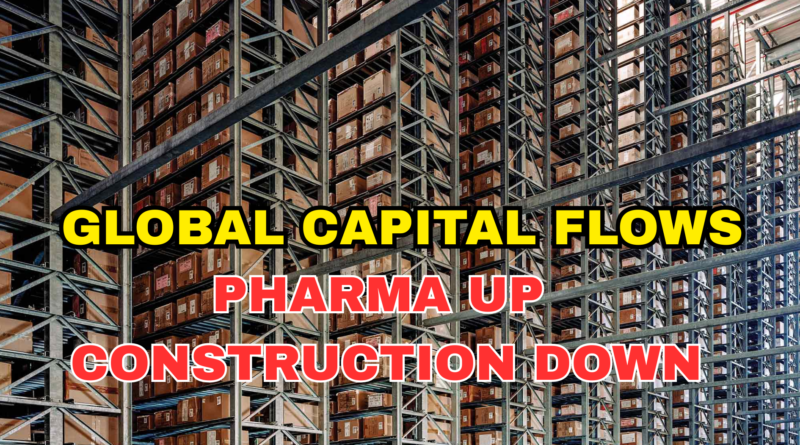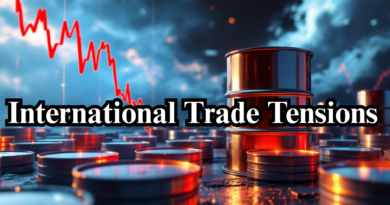GLOBAL CAPITAL FLOWS: PHARMA UP, CONSTRUCTION DOWN
In June 2025, new data released by the U.S. Treasury has revealed a clear shift in where foreign investors are putting their money. According to the report, the pharmaceutical industry has seen a noticeable increase in foreign capital inflows, while the construction and engineering sectors are facing significant outflows. This change shows how global investors are adjusting their strategies based on changing economic conditions, risks, and future growth opportunities.
Pharma Sector Attracts More Investors
The pharmaceutical sector has become a magnet for foreign capital. Several reasons explain this rise. First, global demand for healthcare products and medicines remains strong after the COVID-19 pandemic reminded governments and people everywhere about the importance of medical security. New diseases, aging populations, and higher healthcare spending are driving consistent demand for drugs, vaccines, and advanced therapies.
Investors also see the pharmaceutical industry as more stable and less sensitive to economic downturns. While construction and real estate depend heavily on market cycles, interest rates, and borrowing costs, healthcare demand does not fall as much during recessions. This makes pharmaceutical companies safer for long-term investments.
Another factor is innovation. In 2025, many pharmaceutical firms are developing advanced treatments, from gene therapies to AI-powered drug discovery. These innovations promise higher future profits. As a result, foreign investors are channeling more money into American and European pharma companies, hoping to benefit from this growth.
Construction and Engineering Face Outflows
While pharma is seeing inflows, the construction and engineering sectors are experiencing notable outflows. International investors are pulling back their money, and several factors explain this trend.
One major reason is the rise in global interest rates. Over the past two years, many central banks increased rates to fight inflation. Higher interest rates make borrowing more expensive for construction projects. Since construction heavily depends on loans and financing, many projects have slowed down, making the sector less attractive.
Second, housing demand in some regions has cooled. In the United States, for example, high mortgage rates are discouraging new home buyers. Similarly, commercial real estate has not fully recovered from the pandemic as remote and hybrid work reduce demand for office spaces. Investors see these risks and prefer to move their money elsewhere.
Engineering and infrastructure projects are also facing delays due to higher raw material costs, global supply chain disruptions, and political uncertainties. For international investors, this creates unpredictability, and many prefer to reduce their exposure.
Global Shifts in Investor Preferences
The contrast between rising pharma inflows and falling construction outflows reflects a bigger story about how global capital is moving in 2025. Investors are prioritizing industries linked to health, technology, and innovation, while reducing exposure to sectors dependent on high financing or cyclical demand.
Healthcare, clean energy, and advanced technology are now viewed as “future-proof” industries. Construction and traditional engineering, on the other hand, are struggling with higher costs, slower growth, and changing patterns of demand.
Another trend is risk management. Investors prefer stable and resilient industries during uncertain times. Geopolitical tensions, inflation, and uneven global growth are pushing many to choose safer sectors like pharma, instead of riskier areas like construction.
What This Means for the Future
The U.S. Treasury data is more than just numbers; it signals possible future economic directions. If foreign investment continues to flow into pharmaceuticals, the sector may experience faster innovation, new partnerships, and stronger global influence. More capital also means more resources for research, development, and expansion into new markets.
For construction and engineering, the outflows highlight the need for adaptation. Companies in these sectors may need to rethink their models, focus on green and sustainable building, or explore new financing strategies. Governments may also step in with infrastructure spending to keep projects moving and attract investors back.




